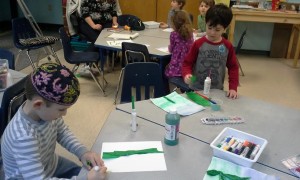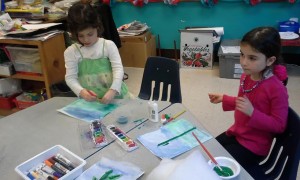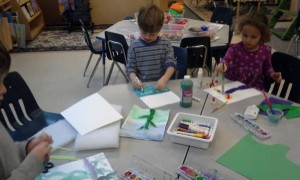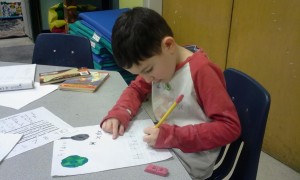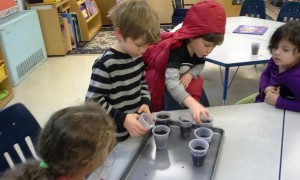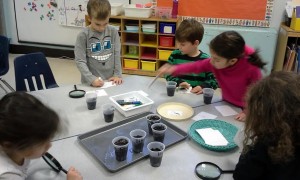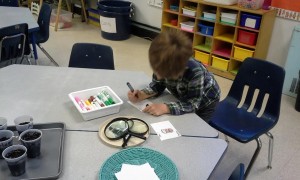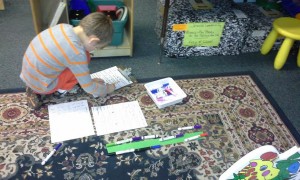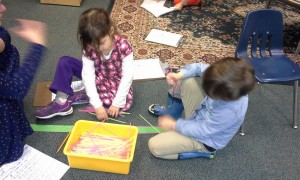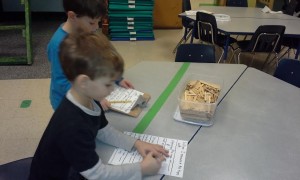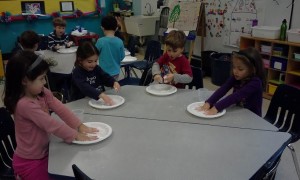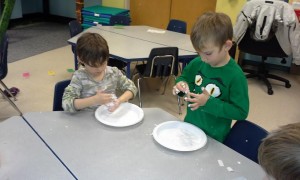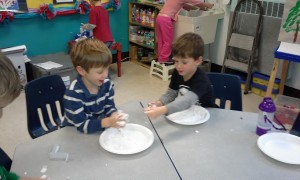As we continue to explore the fantasy genre, we read the story Jack and the Beanstalk, and discovered that there can be different versions of stories we read. In fact, many of us were already familiar with this book! We remembered that the main character, Jack, traded his cow for some magic beans. We knew that the beans would grow a magic beanstalk all the way up to the clouds, and we anxiously prepared ourselves for Jack to meet the “scary” giant. However; we were pleasantly surprised when the giant (ogre in this story) was actually not so scary! In fact, he was sad that Jack was trying to steal his hen that laid the golden eggs, his bags of gold, and his golden harp. Together, Jack and the ogre problem solved and peacefully decided that the ogre would lend Jack the golden harp, hen, and he could take half of the gold. Many of us decided that we preferred this version of the story!
Amazing Vocabulary Words
(Jack and the Beanstalk)
- ogre
- beanstalk
- lad
- naughty
- lend
- magic
Connecting to this story, the children created pictures of beanstalks using various materials including, craft sticks, pom poms, paint, glitter, tissue paper, construction paper, straws, and more!
Afterwards, they wrote about what they would find at the top of their beanstalks. Here are some of their ideas:
At the top of my beanstalk there is/are…
- A golden crocodile
- A bunch of Legos
- Pokemon
- A candy house
- A club house
- A Snugglephant
- Star Wars
- Treasure
- Sadie (my dog)
We also planted “Magic Beans” which we will observe over a period of two weeks. Each day, the children will document their observations on note cards and by the end of the two weeks, they will have a beanstalk flip book displaying the growth process.
In math, we practiced using nonstandard units of measure by finding the length of various pieces of tape. The children used markers, craft sicks, paper clips, cubes etc. and discovered that they needed less of the larger objects and more of the smaller objects when determining the length.
Over the next few weeks, we will be exploring temperature, snow, and ice. We will be conducting various experiments; however, to help us get into the “wintry mood,” we made our own FNOW! (fake snow)
Ingredients:
- Baking soda
- White hair conditioner
Mix three cups of baking soda to 1/2 cup of hair conditioner.
The FNOW felt cool, damp, and soft like real snow! We even made FNOWballs!
Snowball Sight Word Game
Sight words:
- I
- am
- the
- little
- a
- is
- to
- have
- we
- my
- like
- for
- he
- she
- with
- me
We played another game to help us identify sight words. First, the children each wrote their name on a piece of white paper, and crumpled the paper into a “snowball.” Then we selected one of our sight words to be the “sight word snowball.” We flipped over different cards until we came to the chosen word. Once that card was flipped over, the children threw their snowballs into the middle of the circle. Afterwards, they each selected a random snowball, smoothed out the paper, read the name, and sat in the spot of that classmate for the following round.
Math Jumping
Another game that we have been enjoying is our addition and subtraction jumping game. Not only does this game allow the us to practice math skills, it is also a fantastic way to get up, move our bodies, and get our wiggles out! Each child stands in their place and listens to the directions.
“Jump 9 plus 2 times.”
“Jump 8 plus 3 times.”
“Jump 12 take away 1 times.”
We take some time to talk about what we notice:
“These are all ways to make eleven!”
At times the children like “tricky” ones:
“Jump 5 plus 5 times.”
“Jump 9 plus 1 times.”
“Jump 10 take away 10 times.”
Oftentimes, this last direction can be confusing similar to way the Simon Says can be tricky. Your body is so used to jumping, that it automatically starts moving. The key is to listen carefully to the problem. We have a great time with this activity!
Vowel/Consonant Game
We start by standing in a circle and each child says a letter in alphabetical order. When someone gets a vowel, they need to sit down. We go around and around, until we have “one consonant standing.” Everyone in the class says, “mazel tov!” to the winner, who then responds, “thank you.” Not only does this game allow the children to differentiate between consonants and vowels, it also gives them the opportunity to practice good sportsmanship.
Hebrew
While we were learning the letter chet, we used different materials! We had fun making a chalon(window). The children chose to have their chalon (window) open for different objects that begin with the letter chet – like a chanukiyah (menorah for Chanukah), chatool (cat), and challah. We also baked challa with Hepzibah.
Ella: God told them to go to the desert. God promised Avraham and Sarah that if they moved to Israel, they would have a big family…as much as all the sand and all the stars.
Naftali: So many that you can’t count them.
Hannah: It will be a kehila of the people of Israel.
Simon: They went with Lot and his children and his wife.
Hadas: Then they got to Israel.
Naftali: Then the two shepards, Abraham-Shepard and Lot-Shepard, fought.
Moshe: Then Lot moved away, because they didn’t want to fight, so he went to find new grass.
Naftali: I would share the grass.
Moshe: I would make a border to share the grass.
Noam: I would divide the grass exactly by two so both people could have the same amount.
Ella: Avraham let Lot pick what to do, and Lot said he wanted to move by the river.
Naftali: It’s called the Jordan river because it’s next to Jordan.
Hannah: Israel has arba neighbors.
Ayden: Abraham lived in a tent.
Hannah: An ohel.
Noam: There were four doors that were always open so they couple welcome people.
Moshe: They washed their hands and feet and gave them food and water.
Ayden: So they feel good.
Ella: Like chaverim!
Moshe: And taught them about HaShem.
Maya: That you can’t see him.
Naftali: They saw three people in the desert who came into the tent and Avraham and Sarah said…
All: Baruchim HaBayim!
Noam: They gave the strangers food and water.
Simon: The strangers said that they had a message.
Noam: That Sarah would have a baby!
Hadas: They laughed because Sarah was very old.
Hannah: And Avraham was almost 100 years old.
Ayden: He was named Itzchak.
Moshe: Because they all laughed when he was born!
Ella: When Itzchak was older he was very quiet and he didn’t have any friends, so they looked for a good friend for Itzchak.
